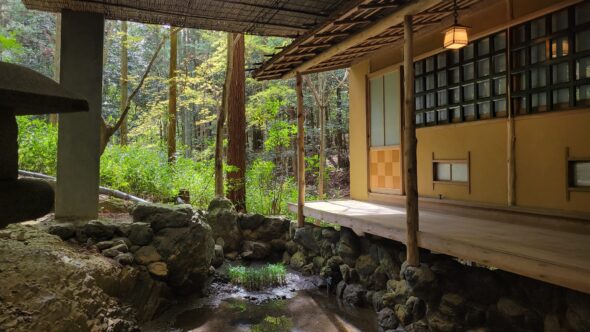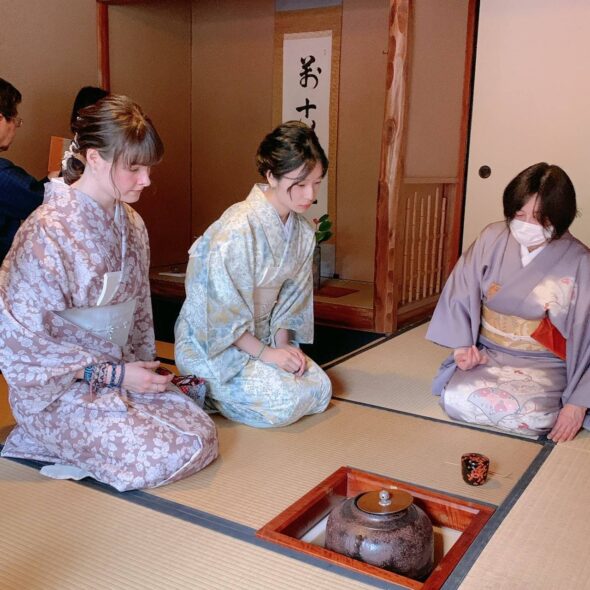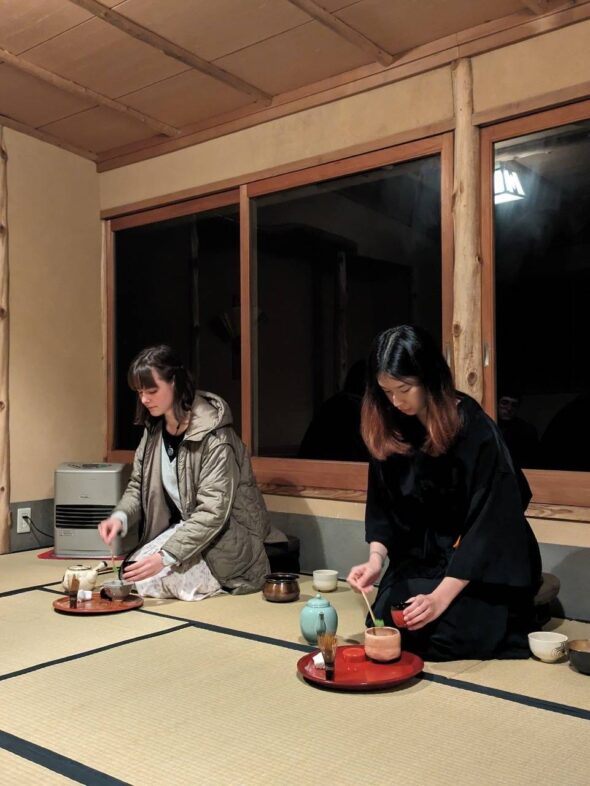This semester, I attended tea ceremony lessons at Kyoto Wabichakai with Fujimura sensei. Each week, we learned and practiced the steps to tea ceremony, and learned about the many philosophical and religious aspects of tea that are embedded in Japanese culture and thinking.

Chashitsu during the early morning
I highly recommend this CIP to those who are seeking an authentic experience in Japanese culture. Throughout the lessons, Fujimura sensei would teach us about very thought provoking questions like the aesthetics of tea, the way movements, pacing, and demeanor can affect the atmosphere of a tea gathering, the way yin and yang, Zen and Shintoism interplay in the tradition of tea, and much more. Fujimura sensei was also very keen on providing us students with as many opportunities to be immersed in Japanese culture and brought us on memorable trips around Kyoto and Japan including plum blossom viewing at Kitano Tenmangu, sunrise and omairi at Ise Jingu, and an ohanami and ochakai at Heian Jingu in kimonos.

Learning about chadougu during an ochakai at Heian Jingu
I think that going to every practice with an open mind and having the willingness to learn is the key to making the most out of a CIP like this. Because the duration of your CIP (and also your stay in KCJS) will be much shorter than you will anticipate, it will be impossible to master tea during that short time. Rather than perfecting the movements and steps, I found it most meaningful to experience the mindfulness and meditative state that tea evokes and internalize it into something that is very personal to myself.

Practicing sadou
